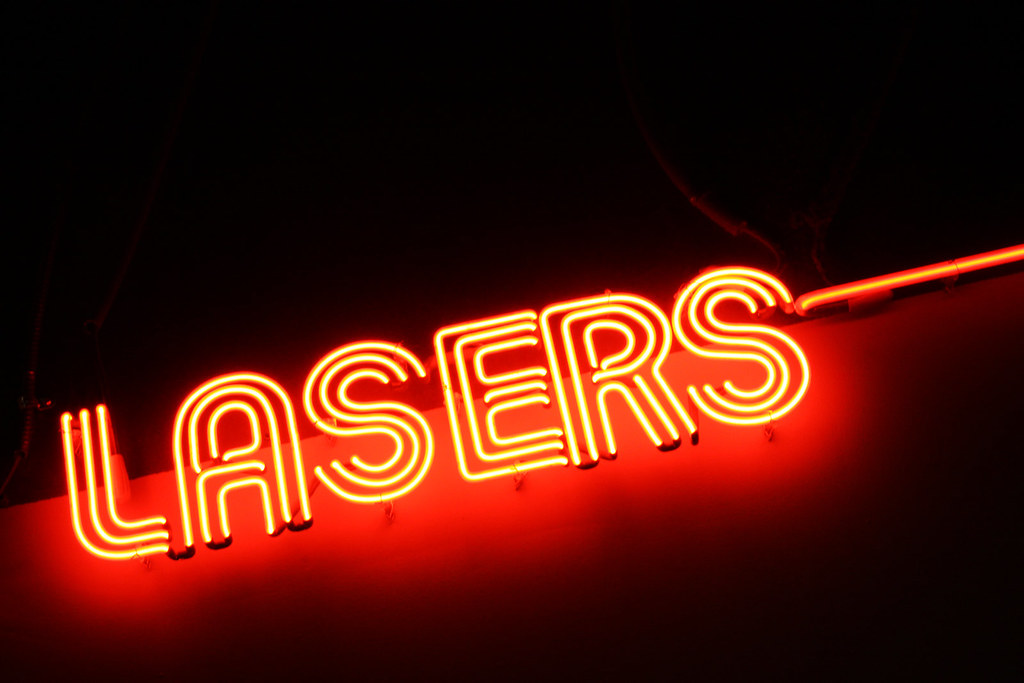
Laser technology has its roots in the 60s when the first types of lasers were uncovered and the first demonstrations were made. A lot has changed since, and right now modern laser technology is on a roll. They’ve achieved tremendous diversity and we can only hope that things will get better and better as we advance into the future. Bar-code readers, red laser pointer for cats, LEDs, and diode lasers that are mass-produced for different purposes have managed to change completely the way people run their businesses.
Innovation taken to the extreme
Lasers used for research are incredibly sophisticated tools. Lasers that are made of titanium sapphire and that are pumped with diodes and neodymium have the capacity of generating femtosecond pulses; these are manipulated into becoming a femtosecond frequency comb that measures optical frequencies with incredible accuracy. These lasers will most likely become tomorrow’s optical for precision measuring.
Continuous research in this domain is being performed, and the future seems rather promising for laser technology. Manufacturers are constantly developing new types of lasers, and right now they’re focusing on new wavelengths visible in the terahertz range. However the industry does go through a lot of challenging, particularly when it comes to developing short wavelength sources of light meant to focus on writing fine details on semi-conductor chips. But then again, this is just a bump in the road and somehow they’ll find a way to make it work.
By 2025, laser technology might be worth $17.6 billion
We cannot ignore the great potential of lasers. Lasers are a powerful light resource. They have amazing properties that are not found in average sources of light, such as tungsten lamps or mercury lamps. The fabulous property of laser is that its waves of light travel extreme distances with almost no deviation. Conventional light on the other hand, emits a blend of separate waves that revoke themselves at random; this basically means that conventional beams of light don’t travel very long distances.
Laser technology in biology & medicine
Lasers operate at very distinct wavelengths, and their uses are numerous. According to recent market trends, laser technology is speeding up the pace and advancing in fields like medicine and biology. There’s a particular focus on the field of both conventional and unconventional medicine. That’s because laser technology is precise, and it can be used in surgery. However the truly fascinating aspect of lasers is their use in biology. There are laser devices that can cut through very delicate tissue. The technology goes by the name micro-dissection, and it provides a fast method of removing and isolating targeted cells from extremely complex biological micro-organisms.
The molecular assessment of altered tissue and cells for RNA, DNA or protein expression has totally revolutionized diagnosis and research in pathology; lasers are enabling the assessment of the cell type role in the conventional disease and physiological process. Together with traditional therapeutic and diagnostic approaches, lasers have the best chances of revolutionizing the medical field.
Research is pointing out that laser technology is contributing to the development of treatments at a nano-scale. This could be extremely helpful in the field of cancer, as it could lead to the creation of new techniques to deliver drugs and perform surgeries. Further studies are still being performed, although there’s no way we can ignore the great potential laser technology has. Businesses are using them to engrave their products, and thus make them traceable, and the uses certainly don’t stop here. In terms of future expectations, we can only assume the greater things will happen, as this is a field and a domain worth exploring.